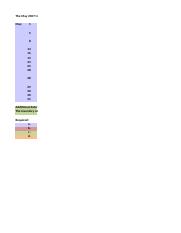
Content

Both consensus models and consensus ensembles perform on par with human experts regarding the similarity to the est. GT, but the consensus ensembles yield by far the best results regarding their reproducibility. We conclude that, in terms of similarity metrics, only the consensus ensemble strategy meet the bioimaging standards for objectivity, reliability, and validity. In order to test for reliability of our analysis, we measured the repeatability and reproducibility of fluorescent feature annotation of our DL strategies. We assumed that the repeatability is assured for all our strategies due to the deterministic nature of our DL models .
As indicated before, all models and ensembles show a highly significant context-dependent increase in the number of cFOS-positive nuclei, but also a notable variation in effect sizes for both expert and consensus models. Moreover, we identify a significant context-dependent increase in the mean signal intensity of cFOS-positive nuclei for all consensus models and ensembles.
The funders had no role in study design, data collection and interpretation, or the decision to submit the work for publication. I do get what the authors mean, but the fact that the icons in the “vertical blocks” (e.g. “data annotation” and “automated annotation”) align with the rows makes it seem that each icon in the block actually belongs to a certain row. A solution would be to rearrange the icons inside each block somewhat (e.g. by making them smaller) so that they don’t line up anymore with the rows. 1) The authors train a U-Net on the same data to demonstrate the performance difference. Related, the authors state that the tool can be run on a local machine, but the code itself doesn’t really support this at the moment . No installation instructions are given, no list of dependencies are given, and the code itself currently depends on Google Colab functionality and is not available as an easily installable and callable Python module.
You are encouraged to include one or more of the items on the ICES evaluation form in order to collect student opinion of your item writing quality. Can most appropriately measure learning objectives which focus on the ability of the students to apply skills or knowledge in real life situations. Can minimize guessing as compared to multiple-choice or true-false items. Provide objective measurement of student achievement or ability.
In theory, a performance test could be constructed for any skill and real life situation. In practice, most performance tests have been developed for the assessment https://business-accounting.net/ of vocational, managerial, administrative, leadership, communication, interpersonal and physical education skills in various simulated situations.
Manual annotation of fluorescent features has long been known to be subjective, especially in the case of weak signal-to-noise thresholds (Schmitz et al., 1999; Collier et al., 2003; Niedworok et al., 2016). Notably, there is no objective ground truth reference in the particular case of fluorescent label segmentation, causing a critical problem for training and evaluation of DL algorithms. The project was triggered by segmentation tasks for fluorescent labels in the cell nucleus. These are rather simple features, and we could readily annotate data from different labs, which facilitated the evaluation. However, this limits the generalizability to more complex image segmentation tasks, where training data annotation is slow and tedious. In particular, human perceptive capabilities for richer graphical features, such as area, volume, or density, is much worse than for regular, linear image features (Cleveland and McGill, 1985; Feldman-Stewart et al., 2000).
If interval is too long say one year, then the maturation effect will affect the retest scores and it will tend to increase the retest scores. There are three ways in which validity can be measured. In order to have confidence that a test is valid , all three kinds of validity evidence should be considered. Specifies and delimits a set of instructionally relevant learning tasks to be measured by a test. Validity refers to the appropriateness of the interpretation of the results of a test or evaluation instrument for a given group of individuals, and not to the instrument itself. Reliability is a necessary but not a sufficient condition for validity.
To implement transfer learning we adapted the training procedure from above. For the fine-tuning approach, we initialized the weights from the consensus models of Lab-Wue1 and performed all steps for model training, evaluation and selection. For the frozen approach, we also initialized the weights from the consensus models of Lab-Wue1 but skipped steps two and three . Hence, Validity and objectivity of tests we did not adjust the model weights to the new training data. Hardware and training hyperparameters remained unchanged. In line with the results of the Kaggle Data Science Bowl 2018 (Caicedo et al., 2019), however, our findings indicate that a model adapted to a specific data set usually outperforms a general model trained on different datasets from different domains.